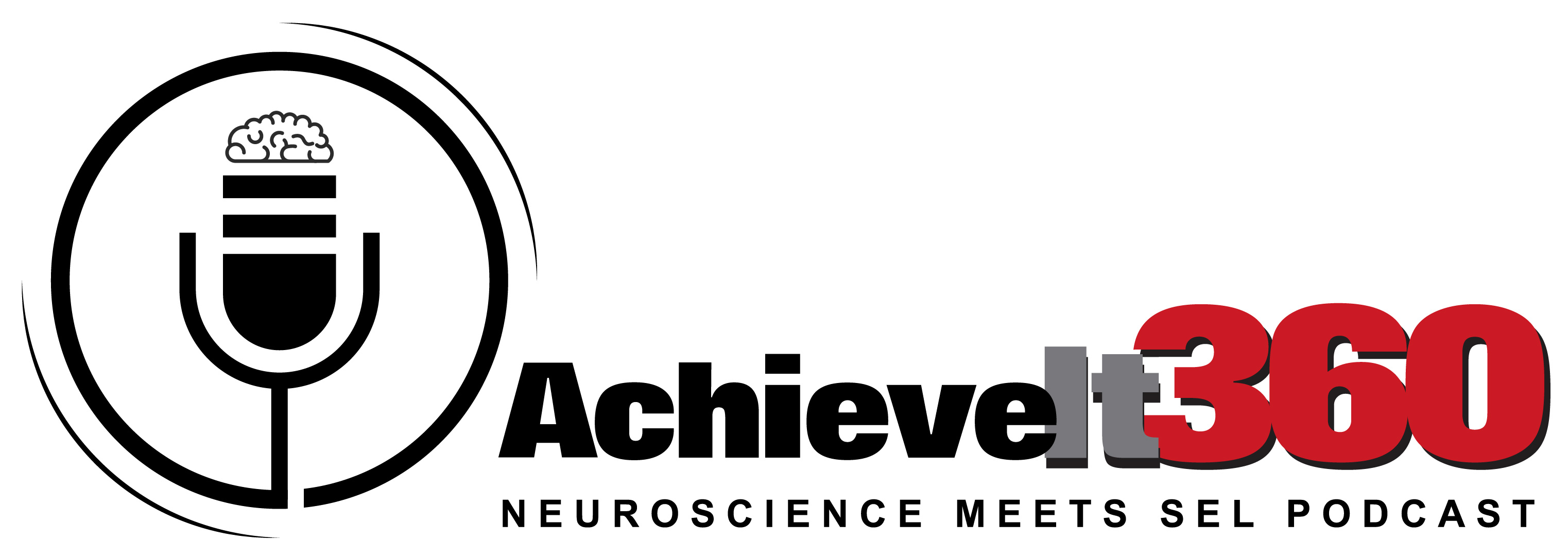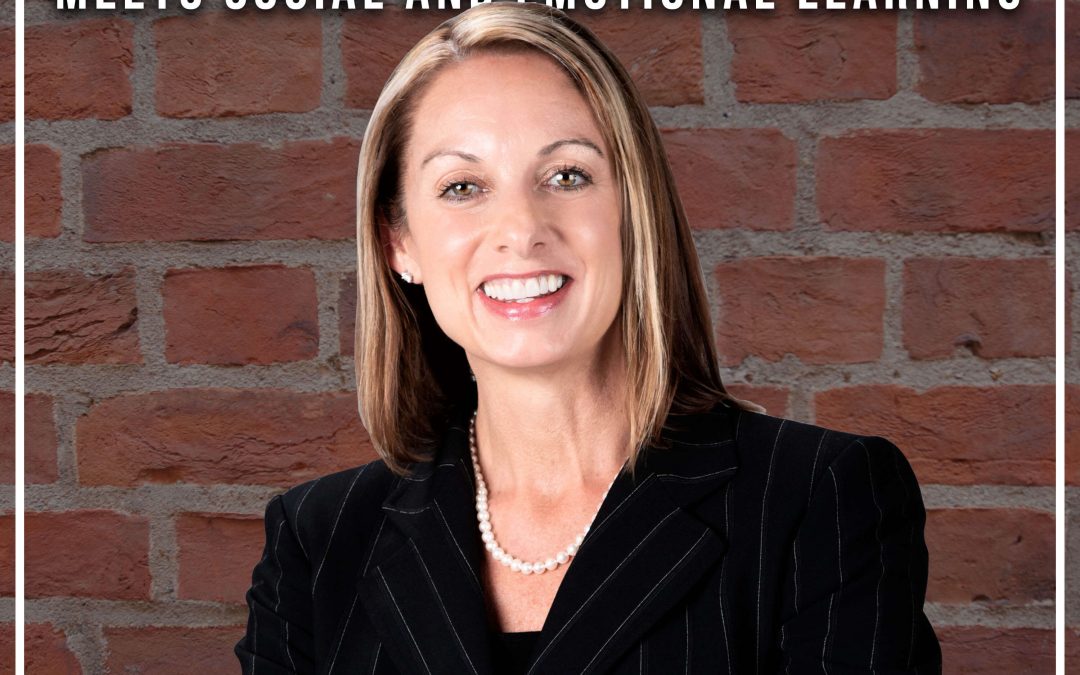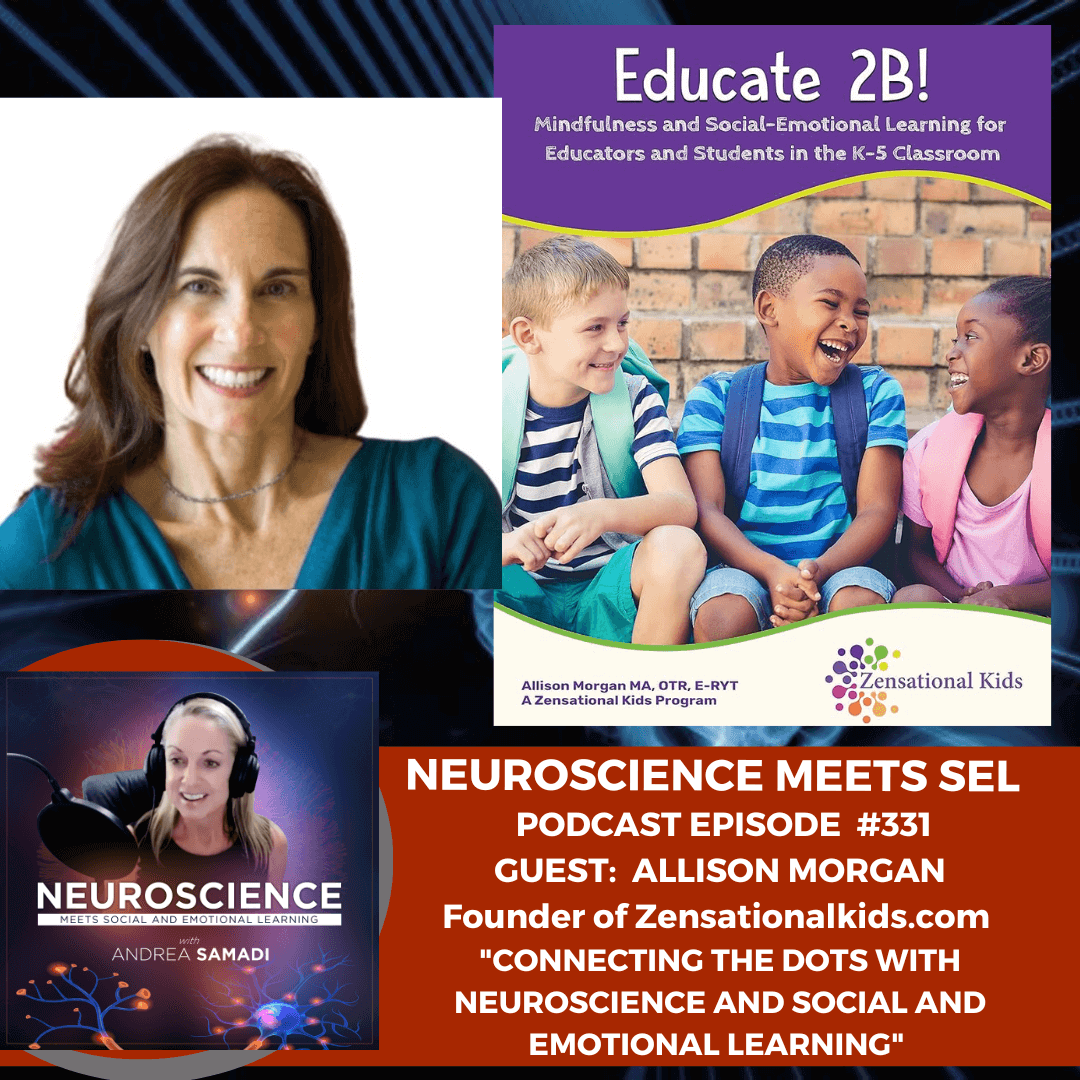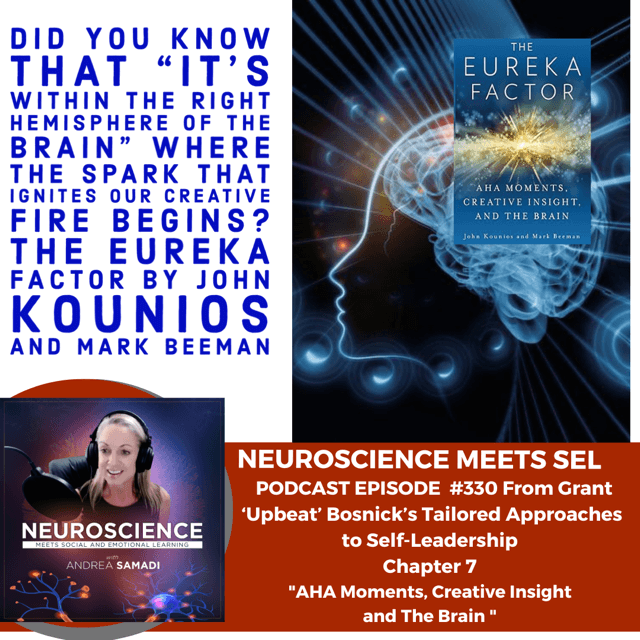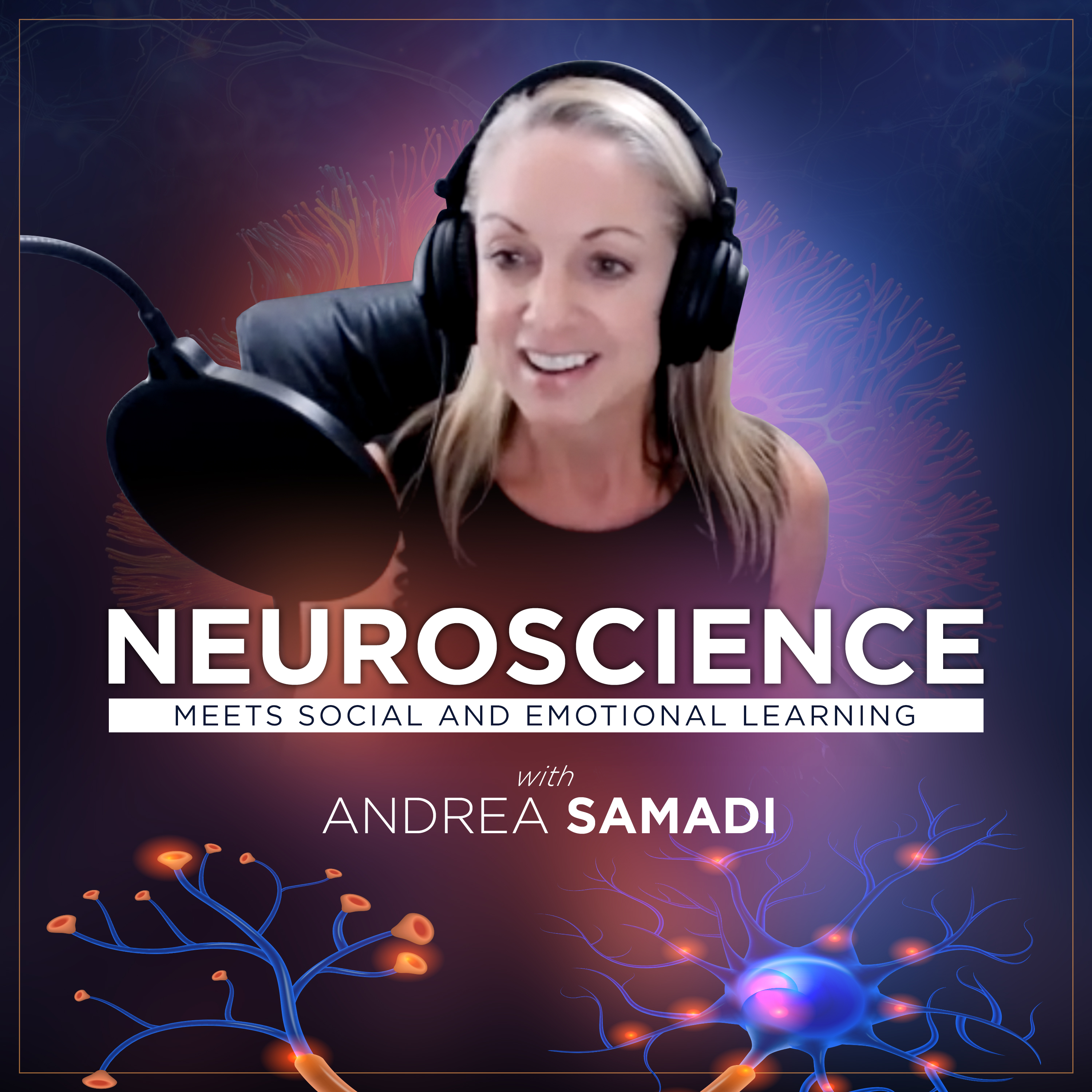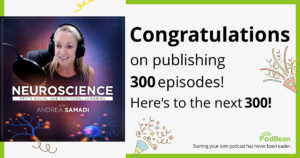Our goal with this podcast is to close the gap recent surveys show exists in our workforce where 58 percent of employers say college graduates aren’t adequately prepared for today’s workforce, and those employers noted a particular gap in social and emotional skills. Research shows that social-emotional skills like social awareness, self-management, and growth mindset are crucial to college and career readiness. We have chosen six social and emotional learning competencies to dive deep into over the next 6 episodes to use as a springboard for discussion and tie in how an understanding of our brain can facilitate these strategies. We want the ideas you take away with you to be actionable whether you are an educator working in a school, an employee or manager in a corporation, or someone just looking to take their skills to the next level. We have done all of the research for you and look forward to hearing about the results that you create.
As a recap, in our first episode, we shared with you the “Why behind implementing an SEL/emotional intelligence training program in your school or workplace.” In the second episode, we introduced the first of the six SEL competencies (self-awareness). With each competency, we’ll investigate the best practices and strategies that you can use to develop and improve your own SEL/Emotional Intelligence and well-being practices, before extending these strategies to your districts, schools, classrooms, workplaces and communities. We’ll offer ideas, tools and resources (in the show notes section) so that anyone can apply these skills themselves, and then teach others for improved results, focus and productivity.
Our next competency is social-awareness.
What is Social-Awareness and Why is it Important?
“Social awareness is the ability to take the perspective of and empathize with others from diverse backgrounds and cultures.” [i] Being socially aware means that we have the ability to:
- Recognize our own emotions in addition to other people’s emotionsUse information about our emotions to help guide or direct our thoughts, feelings, actions and behaviorsBe aware of the thoughts, feelings and motivations of othersBe able to take another person’s perspective
“As an educator, part of our role is to help students see the world through others’ eyes.” [ii] How can we become more socially mindful of others? We know that research shows that students with strong social awareness adapt easily to their environment, are empathetic to others, and have fewer behavioral problems.” [iii] This creates a setting where students can focus on learning. Findings also show that students who demonstrate strong social awareness are better able to engage in effective communication with their peers to resolve conflicts and challenges when they arise.
In the workplace, there are a lot of components to think about. We are all equals (men vs women) and of diverse backgrounds and everyone on the team can contribute in a different way to achieve the end goal. We’ve must learn to communicate between different departments– marketing can’t work without sales and sales can’t operate without marketing. It’s important to learn strategies to connect with all our colleagues.
Tap into Your Own Social-Awareness in 4 Steps
There is a way to train your brain to increase social awareness and create substantial neural changes in your social brain. This practice will help you to change your behavior and in turn, will cause others to trust and connect with you more. Imagine you have a team meeting and you know the outcome that you want from the meeting. There are some steps that you can take BEFORE the meeting that can prime your brain for these results.
STEP 1: Prepare yourself to engage in the present moment. Yawn, stretch, relax and release any negative thoughts and feelings that might be on your mind. You don’t want to carry anything into the meeting to affect the outcome that you want.
STEP 2: Find your power word. Think of a word that resonates with you that represents the outcome of the interaction you are about to have and repeat this word. Words like successful, harmonious, teamwork are examples.
STEP 3: Prime your brain for the outcome. Think of a happy memory that puts you in a good mood. This memory will make you smile and when others see you, will be more trusting of you. This is called neural resonance and can easily be felt. It’s when you feel connected to someone and can’t explain it. There’s a resonance that occurs at the brain level. It can also be felt when you don’t feel a connection to someone, and you get a bad vibe from them. There’s something that your brain doesn’t connect with or it just feels off. This is our mirror neurons at play that help us with social understanding and empathy.
STEP 4: Visualize the interaction you want to have, and you will have with a positive outcome. Remember, your brain can’t determine the difference between what is real and what is imagined, we can use this skill of visualization or our imagination to make our brains fire the exact same way as if we were experiencing what we are thinking or imagining to impact our results.
When you intentionally follow through with a plan to be more socially aware, you will be amazed at the results. It does take practice, but even a few minutes a day can yield outstanding results with how others perceive you.
Think About This: For Educators
Discussion Questions to Increase Your Student’s Social-Awareness
- How can you tell when one of your friends is sad, or having a bad day?What can you do to help someone else if you notice they are “off” when they come to school?How can you help others fit in and feel included more?Why is it so important to be in tune with other people’s thoughts and feelings?
Think About This: For the Workplace
Discussion Questions to Increase Workplace Social-Awareness
- If you notice your colleague is off, what are some things you can say to them that can be helpful?When someone new comes to your team, what can you do to help them integrate into the team?Why is it important to being aware of your colleagues’ unique attitudes, and emotional states?
Outcomes and Results
Positive Classroom Climate: Students with strong social awareness adapt more easily to their environment, empathize with the perspectives of others, and engage in fewer disruptive classroom behaviors. This, in turn, creates an environment where students can focus on learning.[iv]
Better Relationships: Students who demonstrate strong social awareness are able to engage in constructive communication with their peers and resolve conflicts when they arise. These students benefit from peer learning and know how to take advantage of social supports. [v]
Greater Career Success: An employer survey conducted by the Partnership for 21st Century Skills demonstrates that four of the five most important skills for high school graduates entering the work force are linked to social awareness: professionalism, collaboration, communication, and social responsibility. [vi]
Make it common practice to develop these skills, thinking of ways that we can continually give back and help others solve problems, and it will improve the perception that others have of us.
To sum this all up, think of someone you know who is socially mindful. Notice what they do when they are speaking to connect with others. How do they activate your mirror neurons to connect with them empathetically with social understanding? They are connecting with your Limbic/emotional brain where our emotions are controlled, as well as our motivations and the brain’s reward circuit. With practice, this skill can become a habit and yields outstanding results while connecting, impacting others and making you memorable (since emotions help memories form and stick).[vii]
Strategies to Build Social Awareness:
As with all the SEL competencies, when we build our own social awareness, we can model this skill for others. For adults, you can strengthen this skill by using Active and Constructive Responding. “Responses from others perceived to be active and constructive were associated with emotional well-being with better relationship quality, whereas responses perceived to be destructive or passive were negatively associated with these outcomes.” (Gable et al, 2004). [viii]
Strategies for educators/workplace include:
-
- Encouraging your colleagues to share positive news or ideas with each other.Practice being active and engaged with your response by saying something that shows you listened to the news or idea vs ignoring or half listening.Try Social Perspective Taking: the capacity to discern the thoughts, feelings, motivations, and points of view of others from their point of view.
- Consider the culture the other person comes from and see if you can take another perspective to that person’s thoughts/feelings.
Strategies for students
Have students take out of piece of paper and write down a list of 5 people they would like to improve their relationship with by being more socially mindful of and with them. Each time they interact with a person on the list, have them go through the 4 steps to improve their social interactions (prepare for the interaction, find their power word, prime their brain for the outcome, and visualize the positive outcome). With time and practice, they should notice their relationship with these people improving as neural resonance develops.
Resources:
Social Awareness Toolkit https://www.transformingeducation.org/social-awareness-toolkit/
The Montgomery County (Ohio) Education Service Center and Ohio Department of Education video on Social Awareness https://vimeo.com/339150372/c50495aebe
Student:
Transforming Education “Social Awareness in Students’ Words” YouTube Uploaded Feb 1, 2017 (2:25) https://www.youtube.com/watch?v=d75gxU6Nyq0
REFERENCES:
[i] Social Awareness Toolkit https://www.transformingeducation.org/social-awareness-toolkit/
[ii] Former Education Secretary, John King.
[iii] Social Awareness Toolkit https://www.transformingeducation.org/social-awareness-toolkit/
[iv] Greenberg, M. T., Weissberg, R. P., O’Brien, M. U., Zins, J. E., Fredericks, L., Resnik, H., & Elias, M. J. (2003). Enhancing school-based prevention and youth development through coordinated social, emotional, and academic learning. American psychologist, 58(6-7), 466.
[v] Social Awareness Toolkit https://www.transformingeducation.org/social-awareness-toolkit/
[vi] Casner-Lotto, J., & Barrington, L. (2006). Are They Really Ready to Work? Employers’ Perspectives on the Basic Knowledge and Applied Skills of New Entrants to the 21st Century US Workforce. Partnership for 21st Century Skills. 1 Massachusetts Avenue NW Suite 700, Washington, DC 20001.
[vii] Your Brain: 100 Things You Never Knew (National Geographic)
[viii] Social Awareness Toolkit PowerPoint Slide 5 https://www.transformingeducation.org/social-awareness-toolkit/
[ix] Social Awareness Toolkit PowerPoint Slide 24 https://www.transformingeducation.org/social-awareness-toolkit/
Podcast: Play in new window | Download
Subscribe: Apple Podcasts | RSS
